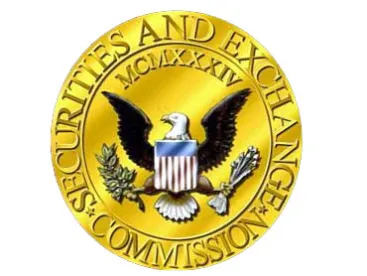On November 18, the SEC’s Division of Corporation Finance and the Office of the Chief Accountant (the Staff) rescinded Topic 5.J. of the Staff Accounting Bulletin Series. Topic 5.J. required an SEC registrant that became substantially wholly owned by another entity, except in certain circumstances, to apply “pushdown” accounting, under which it would reflect in its financial statements the acquirer’s new basis of accounting for the assets and liabilities of the acquired entity. In addition, Topic 5.J. addressed the circumstances in which the acquired entity’s financial statements should reflect the acquirer’s borrowings used to acquire substantially all of the common stock of the acquired entity as well as related interest expense and allocable debt issuance costs.
The Staff explained that its action was necessary to conform its guidance to recent accounting guidance issued by the FASB in Accounting Standards Update No. 2014-17 (the Update). The Update is a consensus of the FASB’s Emerging Issues Task Force that the FASB ratified in October. The Update provides that an acquired entity, regardless of whether it is an SEC registrant, has the option (but is not required) to use pushdown accounting as long as an acquirer has obtained control of the acquired entity. For this purpose, “control” means ownership of more than 50% of the outstanding voting shares of another entity or the power to control with a lesser percentage of ownership, for example, by contract, lease, agreement with other stockholders, or court decree.
The Update also provides that an acquired entity may apply pushdown accounting for the reporting period in which the change-in-control event occurred. Pursuant to the Update, if the acquired entity elected to apply pushdown accounting, it would reflect in its separate financial statements as of the acquisition date the new basis of accounting established by the acquirer for the acquired entity’s assets and liabilities under GAAP. If the acquirer did not establish a new basis of accounting for the acquired entity’s assets and liabilities because it was not required to do so by GAAP (such as when the acquirer is an investment company), the acquired entity may nevertheless still elect to apply pushdown accounting by reflecting in its separate financial statements the new basis of accounting that the acquirer would have applied if it had been subject to the GAAP requirement to apply a new basis of accounting for the acquired entity’s assets and liabilities.
The acquired entity that elects to apply pushdown accounting must recognize in its separate financial statements any acquisition-related liability incurred by the acquirer only if the liability represents an obligation of the acquired entity in accordance with other applicable GAAP. In addition, the acquired entity must provide various disclosures intended to enable users of its financial statements to evaluate the effect of pushdown accounting, including a qualitative description of the factors that make up the goodwill recognized. If, in accounting for the acquisition of control, the acquiring entity recognizes any bargain purchase gains, however, the acquired entity may only recognize the gains as an adjustment to its additional paid-in capital.
An acquired entity that does not elect to apply pushdown accounting for the reporting period in which the change-in-control occurred may elect to apply pushdown accounting in a subsequent reporting period. When such an election is made, the acquired entity must describe the election as resulting in a change in accounting principle and comply with the GAAP applicable to a change in accounting principle. The acquired entity must apply pushdown accounting as of the acquisition date of the change-in-control, regardless of when the election is made.
A subsidiary of an acquired entity may elect to apply pushdown accounting regardless of whether its parent, the acquired entity, elects to apply pushdown accounting.
Whenever an entity determines to apply pushdown accounting, the decision is irrevocable.
As a result of the Update, both public and private entities will follow the same guidance for pushdown accounting and may elect to apply pushdown accounting to any transaction occurring after November 18 or before November 18 but within a reporting period for which financial statements have not yet been issued by the entity, unless the entity treats the election to apply pushdown accounting as a change in accounting principle.




 />i
/>i
